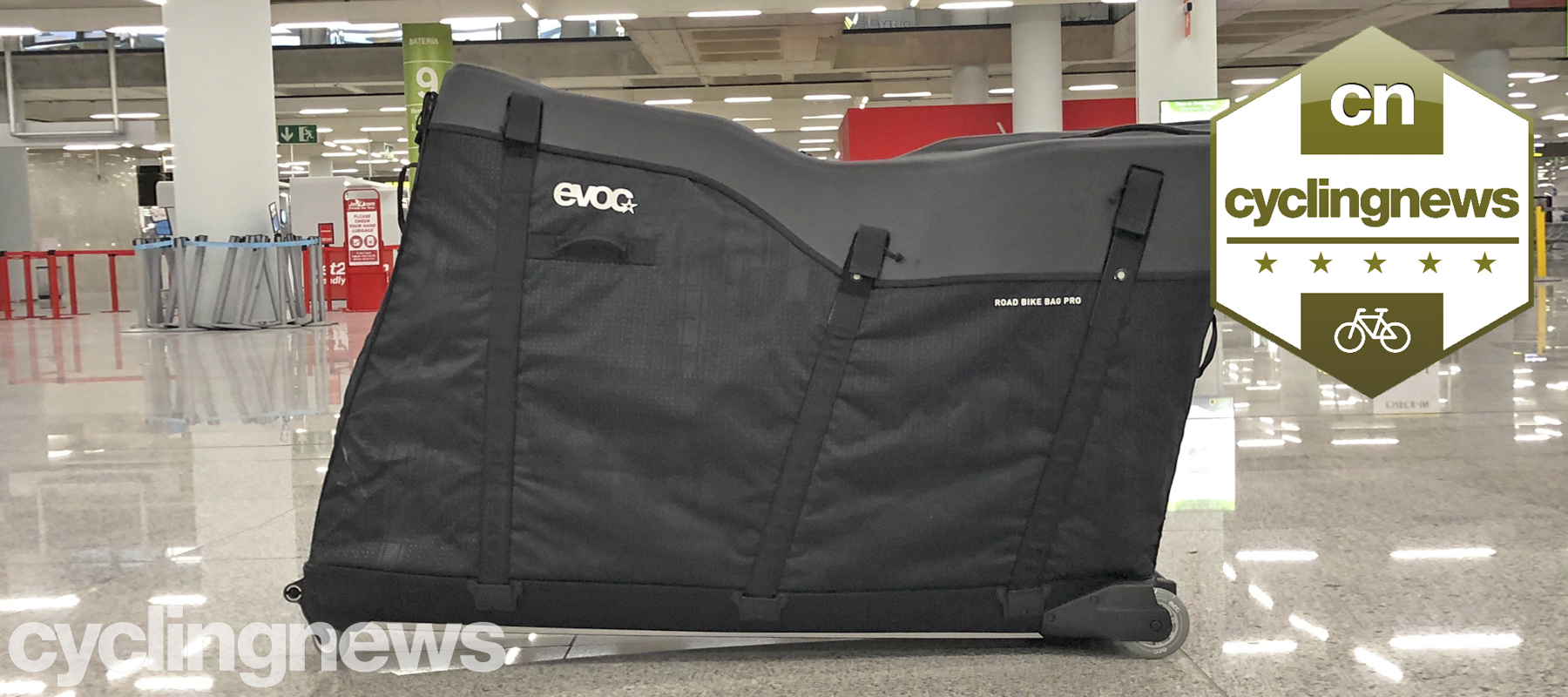Cyclingnews Verdict
Stupendously expensive, but it's an absolute breeze to travel with
Pros
- +
Super simple to pack away a bike
- +
Protective plastics where necessary
- +
Packs down for storage
Cons
- -
Price
- -
Fixed direction rear wheels mean manouverability is reduced
You can trust Cyclingnews
If you've travelled on a plane with your bike, there's a very good chance you've had to disassemble it to within an inch of its life in order to squeeze it into the bike box, before rebuilding it again in a hotel room upon arrival at your destination.
Even for the most mechanically proficient, this can often take hours and, given you're going to need to do the same for the return journey, you're looking at two disassemblies and two rebuilds for a single trip away. Assuming around two hours for each pack/unpack, you're looking at eight hours worth of tool time bookending your supposed 'break' - more than a week's worth of training time for many amateur cyclists.
This might not be the most laborious task for yesterday's technology of externally routed cockpits and removable seatposts, but with evermore integration comes increased tool time for the most simple tasks. In the spirit of competition, many airlines have relaxed their rules a little over recent years and the best bike travel cases have come a long way as a result, nowadays offering increased space and internal support frames to protect your chainstays from the dreaded lateral crush.
One of the latest contenders in the race is the Evoc Road Bike Bag Pro. It promises minimal disassembly, which equates to maximum ride time, but at $925.00 / £749.99, this travel case is looking to fetch more than many people are spending on their holiday in the first place, so is it worth the substantial investment?
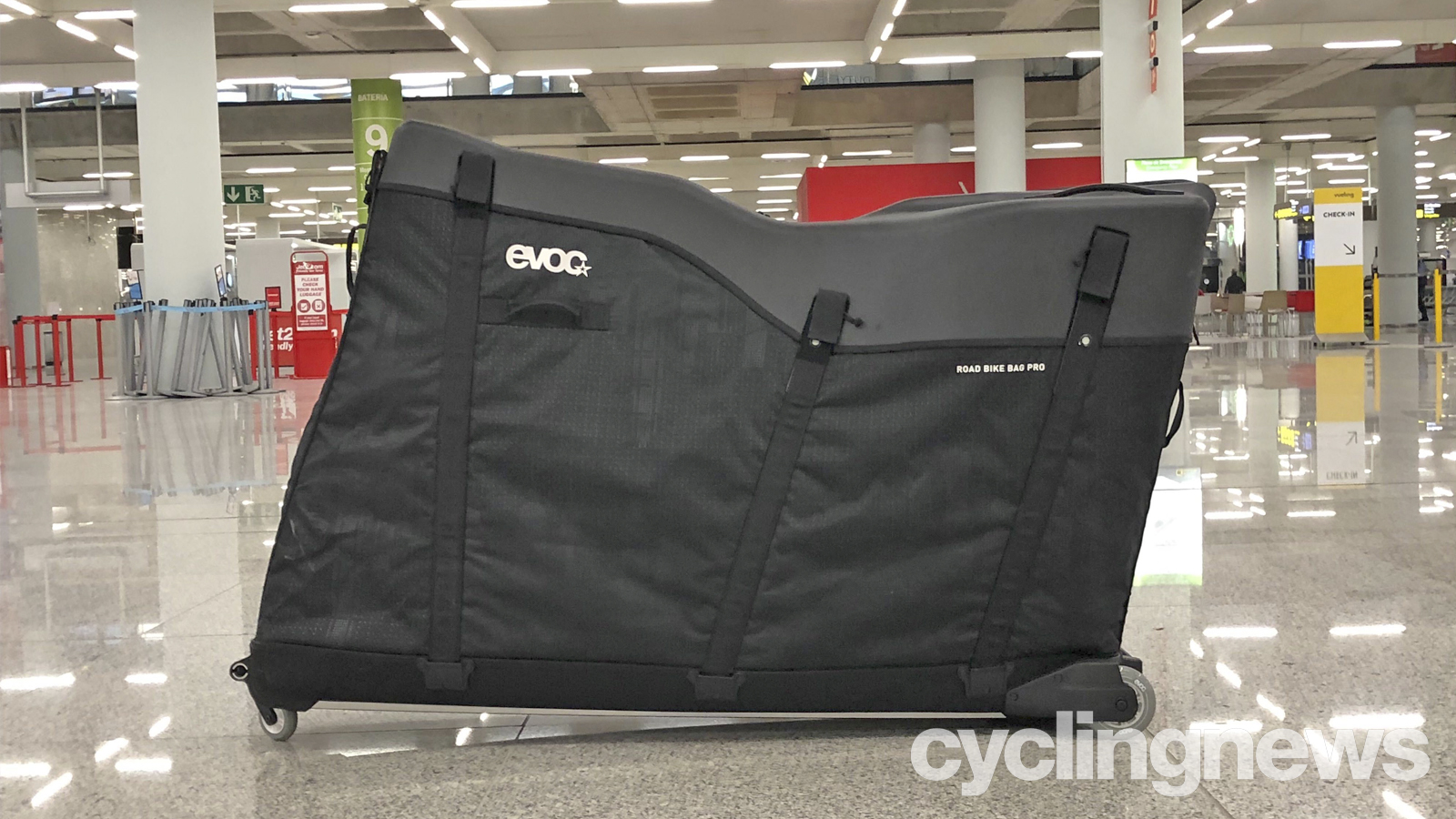

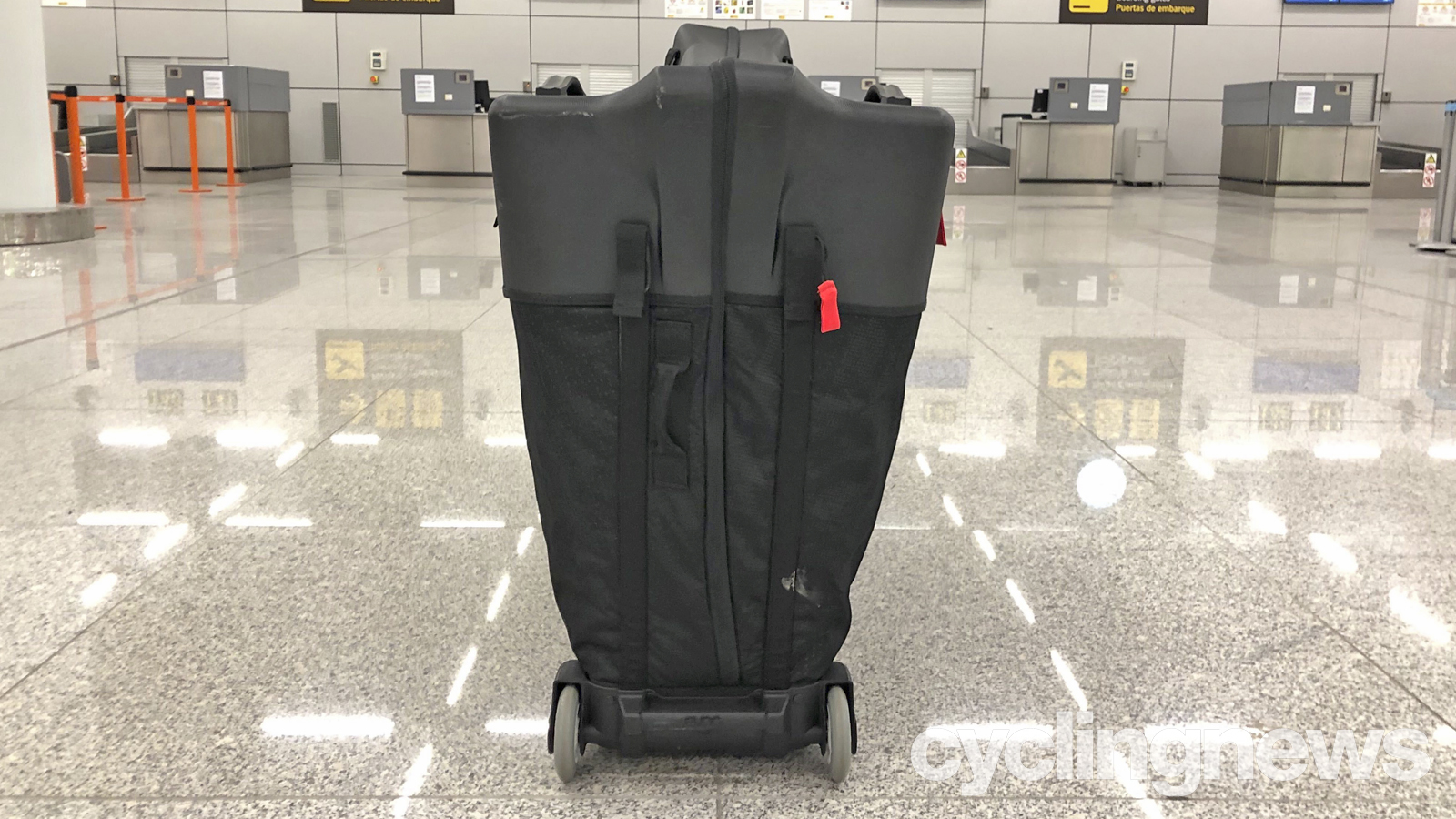
Design and specification
The Evoc Road Bike Bag Pro is built as something of a hybrid; it's not a soft bag, nor is it a hard case. It combines the best of both worlds in order to offer increased protection where it's needed, and weight-saving fabric where it's not.
The case features a single zip that runs the entire length, ultimately splitting the bag into two halves leaving the base intact. The base and top of the bag are given a solid plastic material, while the case's mid-drift uses the softer fabric. This combines for an empty weight of approximately 25lbs (11kg).
Upon unpacking the Evoc Road Bike Bag Pro, I was surprised to find that the case itself needed to be assembled. Partially flat-packed, it not only saves the courier from needing Ross Geller's help to get it up the stairs to your apartment, it also makes for a somewhat less obtrusive piece of furniture between holidays, although, with a square footage of 130 x 53 x 25cm when packed, it's still not something you'll hide away too easily.
Transforming the case from storage mode to bike-ready mode does add time to the overall process of packing for your holiday, but it is a simple task of sliding plastic rods down into designated slots. These hold the soft fabric sides upright and support the weight of the plastic upper.
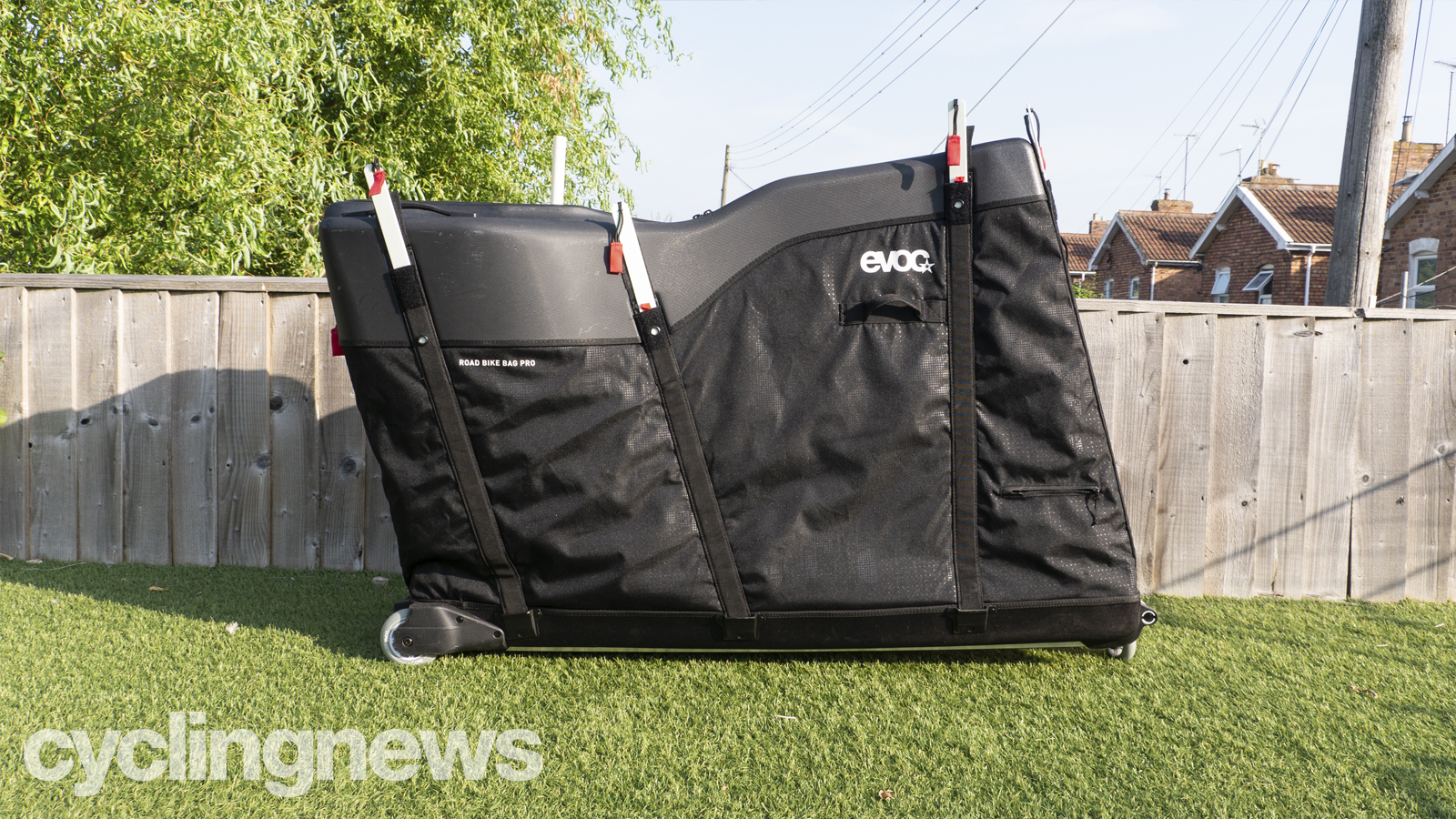
Transforming the case from storage mode to bike-ready mode does add time to the overall process of packing for your holiday, but it is a simple task of sliding plastic rods down into designated slots. These hold the soft fabric sides upright and support the weight of the plastic upper.
I found these can be really finicky at times, needing a healthy dose of finesse - rather than my preferred tact of brute force and ignorance - in order to slide them into the slots in the base. That said, after a few months of ownership, these slots seem to have become a little more supple and this task has eased.
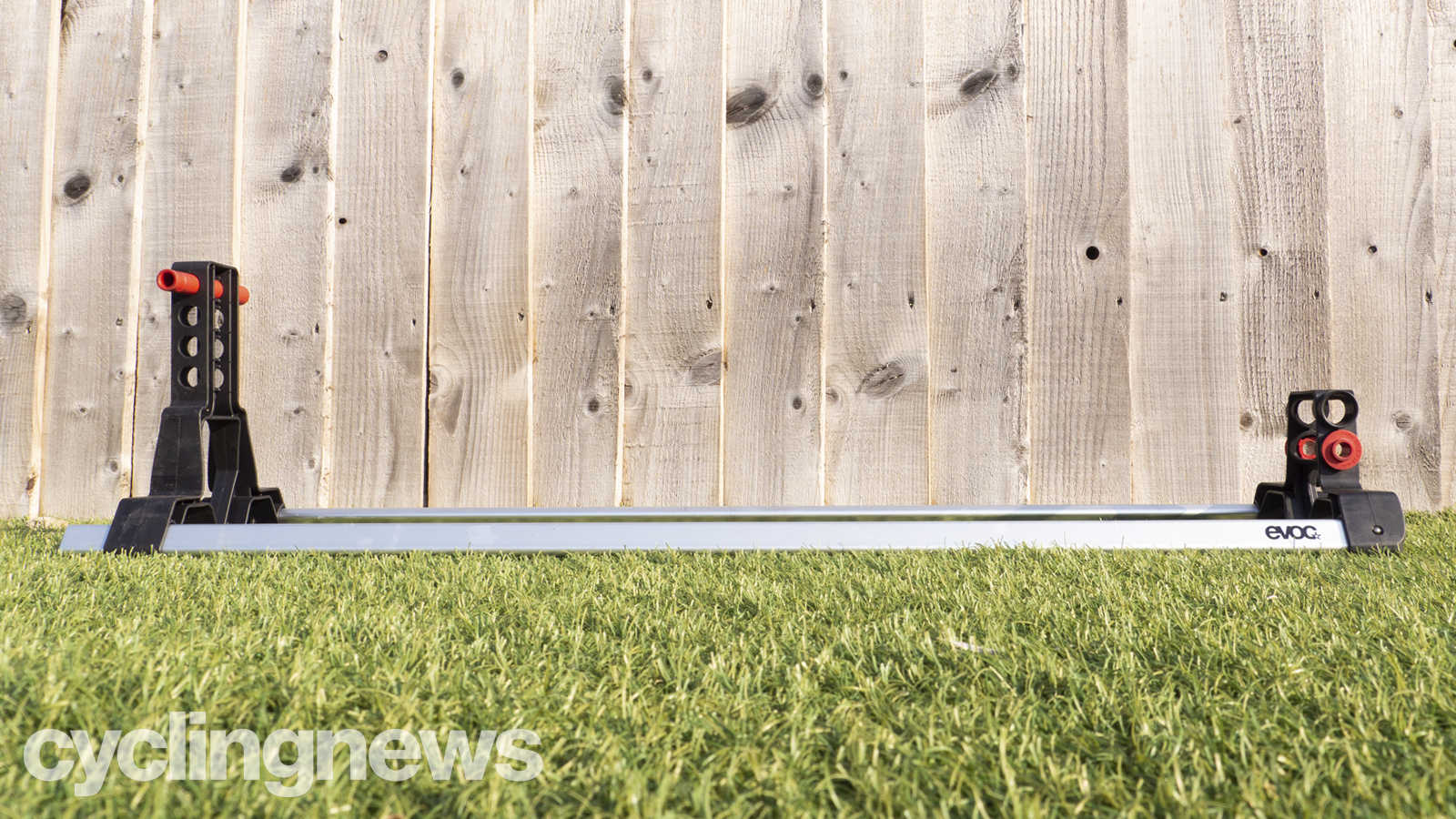
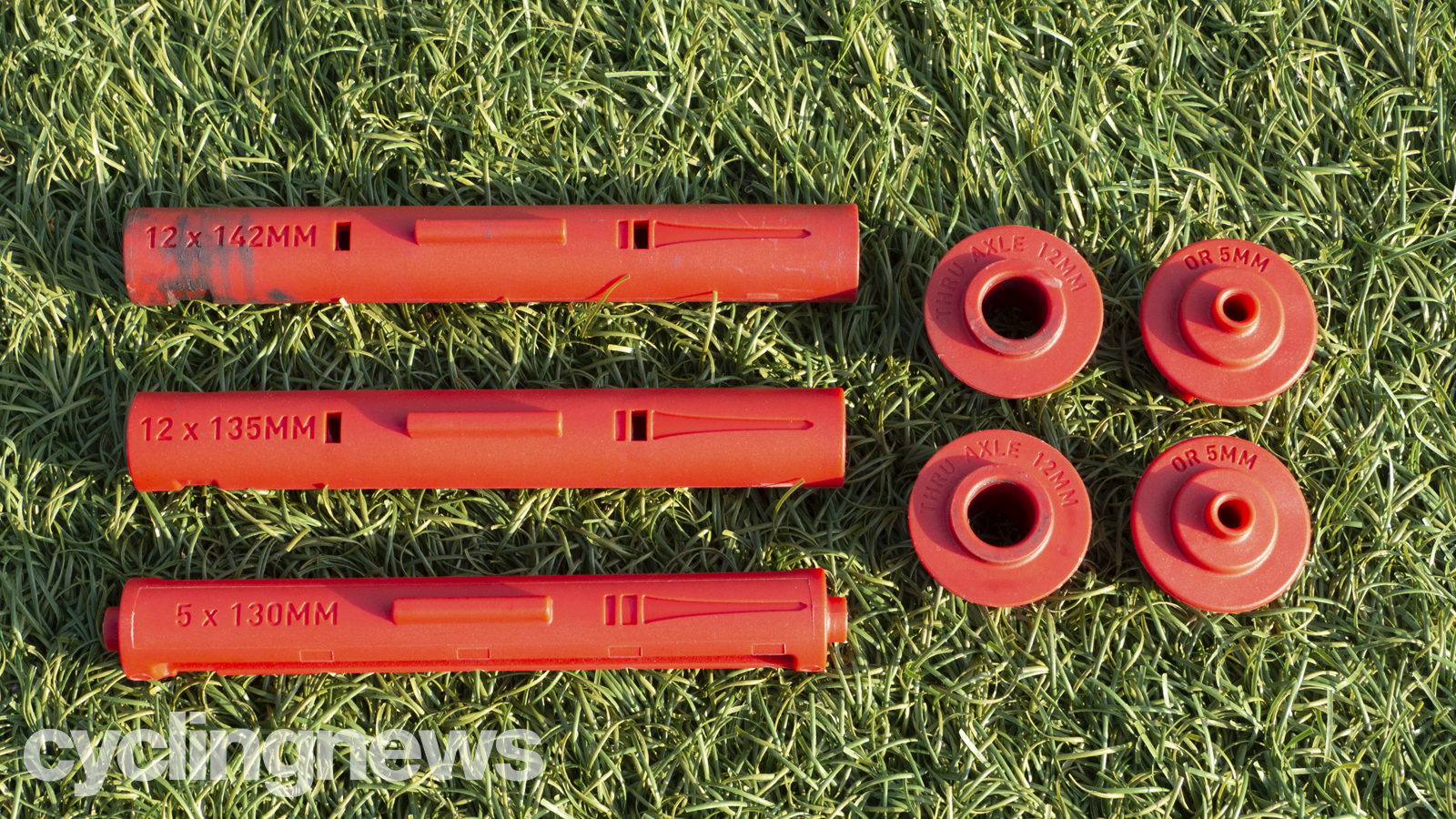
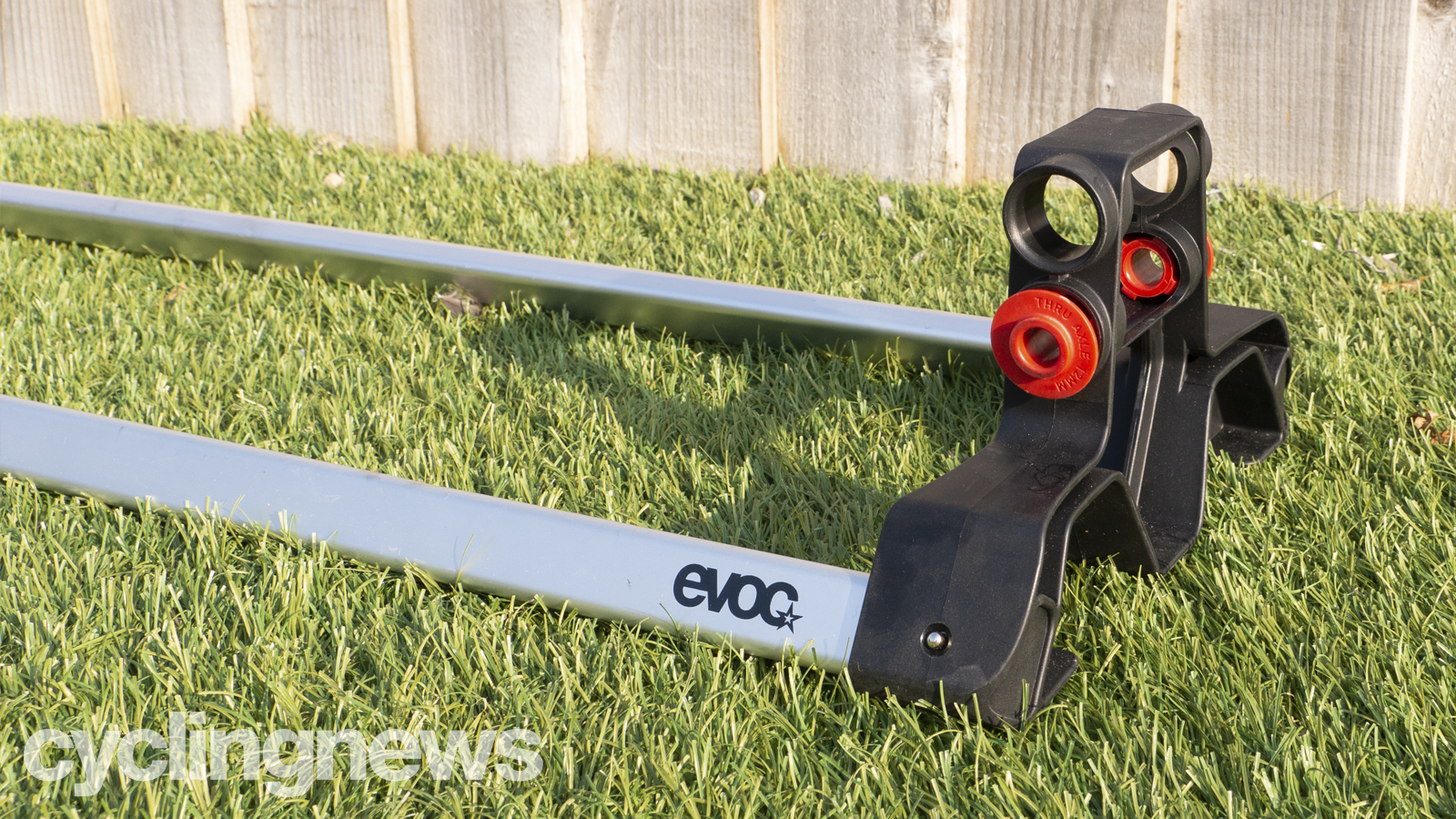
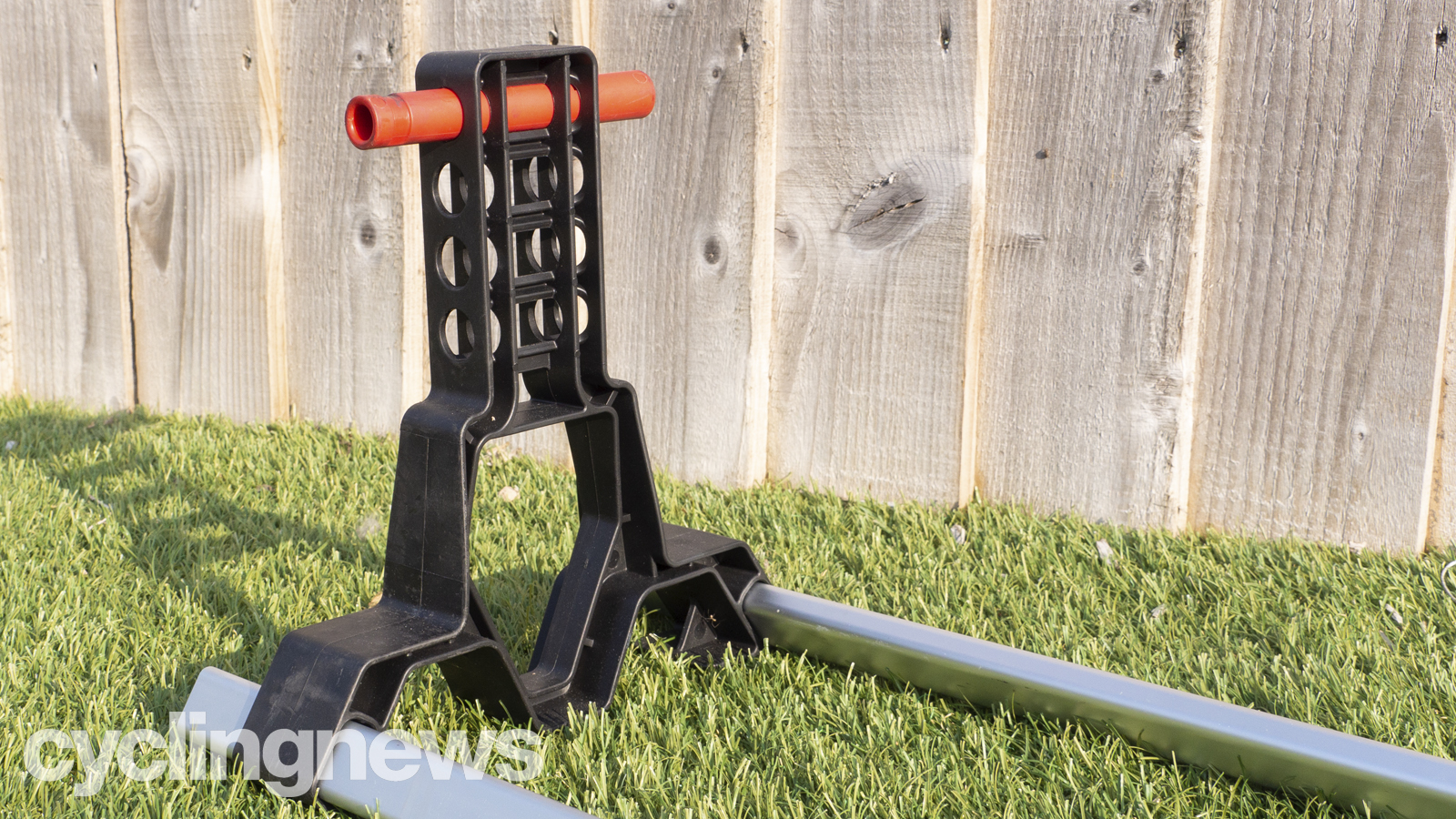
Inside, a part-metal, part-plastic frame can be found, onto which you'll bolt your bike, and a selection of plastic adaptors to cover all your likely axle fitment needs. The frame itself can slide to allow for wheelbases up to 106cm in length, and the sections into which you fit your axles feature multiple holes for varying height needs. At the front, there are two holes, and at the back, there are four holes to account for varying derailleur cage lengths and chainring sizes. As to which you'll need to use, trial and error is your friend. Just check your chainring isn't scraping the floor and your derailleur isn't touching the plastic verticals of the frame.
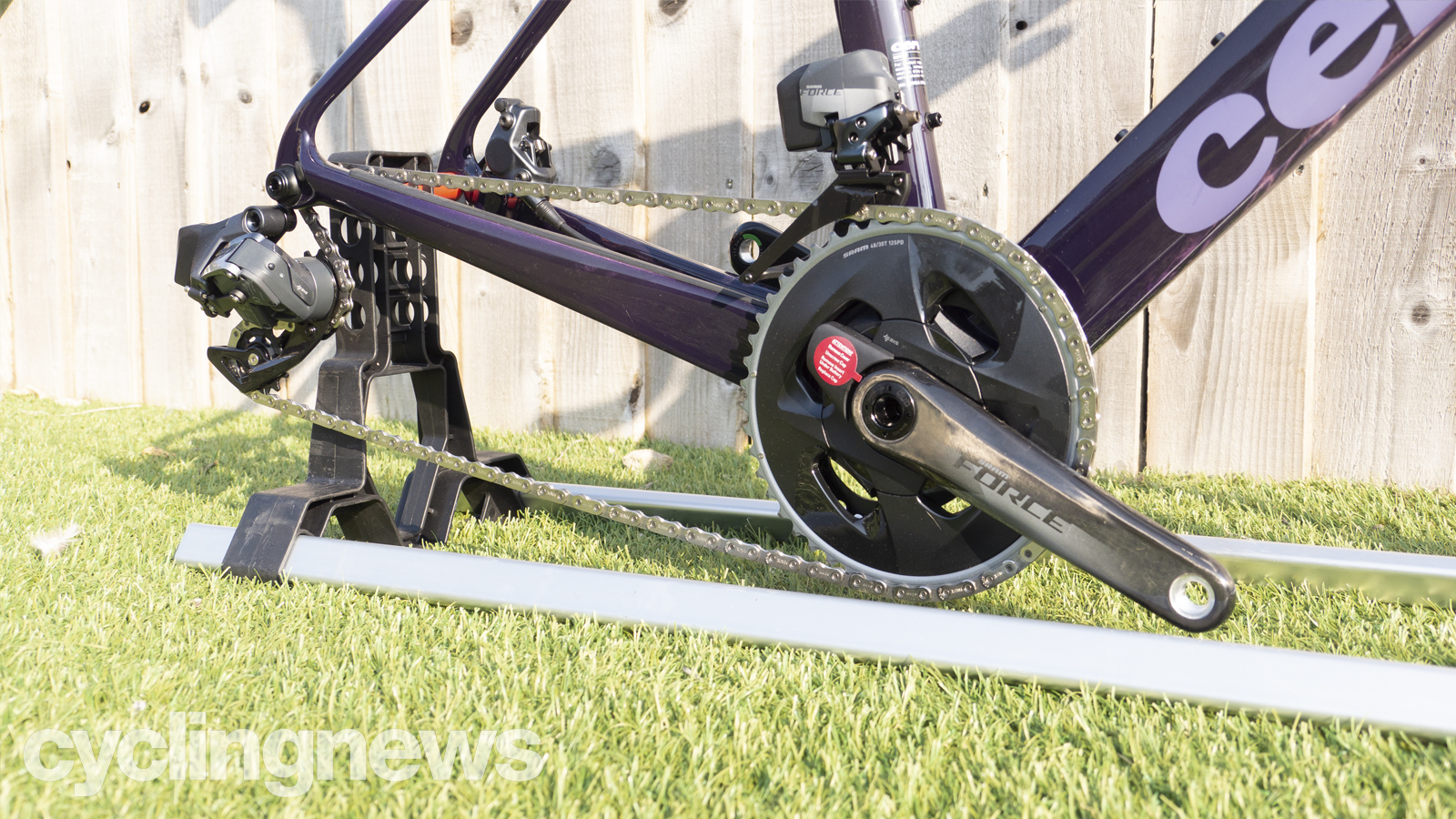
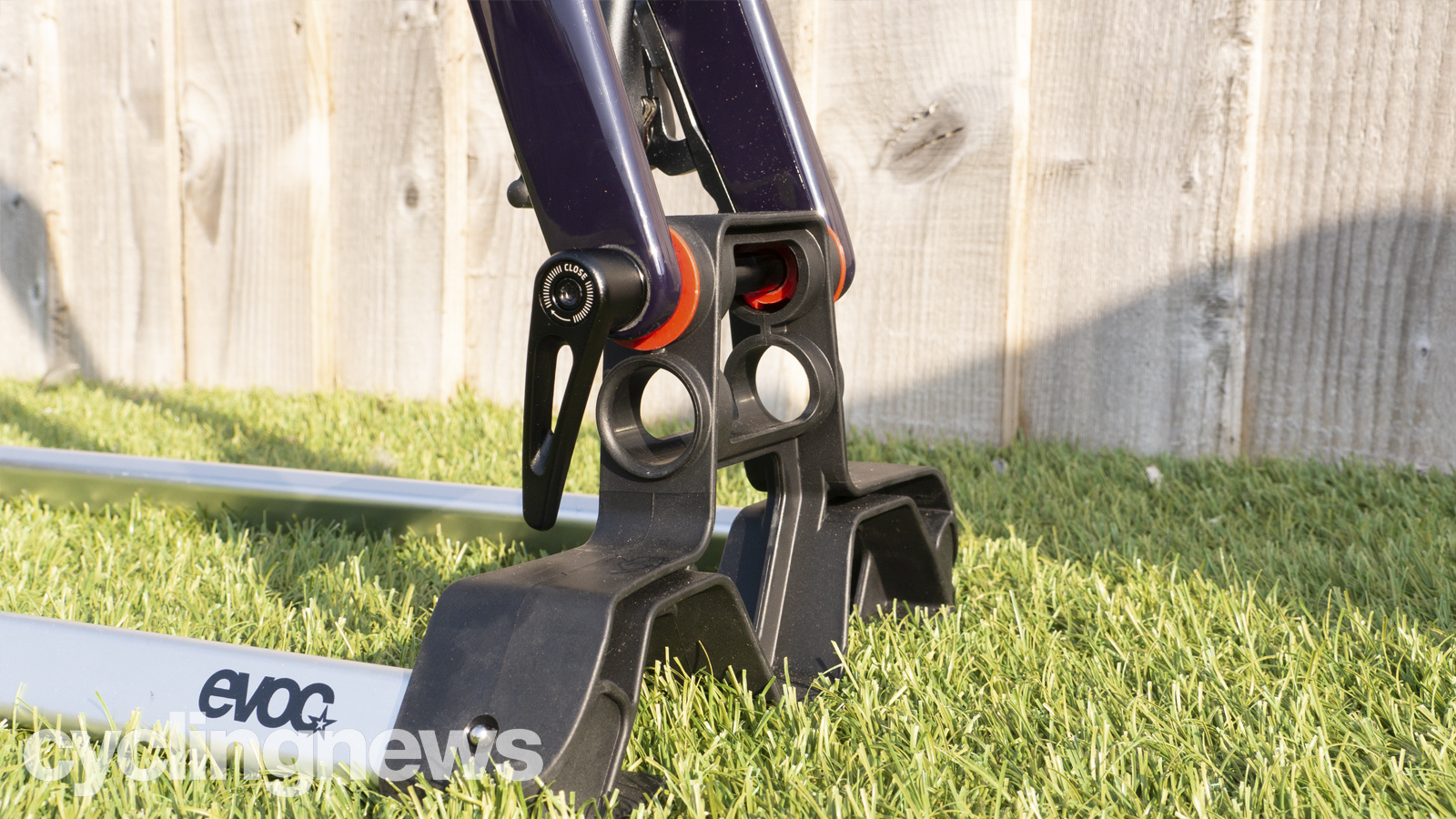
To fit the bike to the frame, all you need to do is remove your wheels and pedals. Your handlebars can stay put assuming they measure less than 50cm, and your saddle height can remain untouched assuming it's beneath 86cm (from the floor when packed on the frame). Removing your pedals isn't actually a necessity, but it does mean you don't need to worry about your pedals damaging your wheels once everything's packed up. Once you've done this, place the necessary plastic adaptors into your preferred holes in the frame, and fit your bike to the frame as if you were bolting your bike to a turbo trainer.
There is a padded cover provided, which is to be fitted over your handlebars to protect against any rough and tumble, and two wheel bags are also supplied to keep your probably-expensive road bike wheels from damaging your equally-expensive frameset.
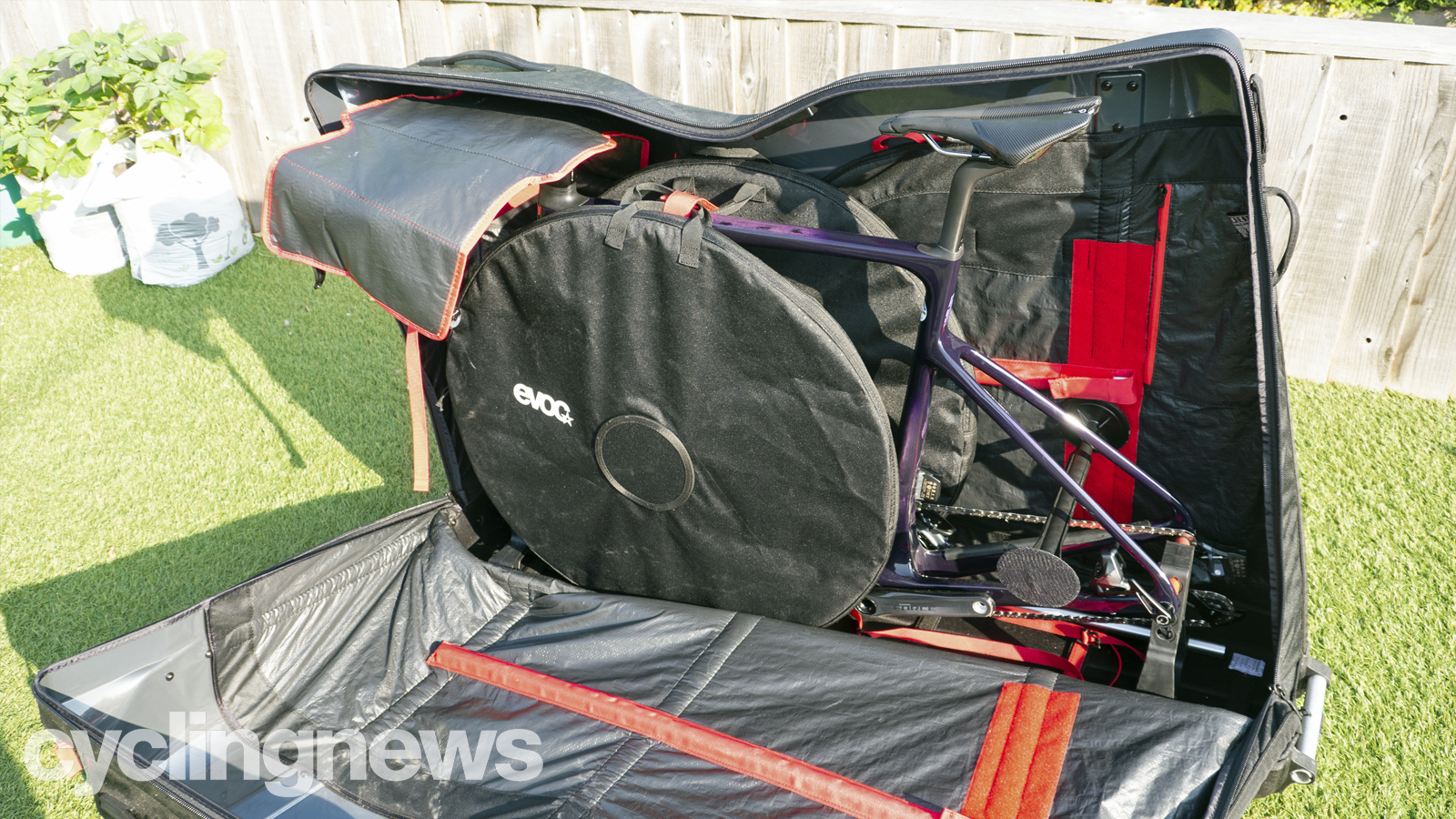
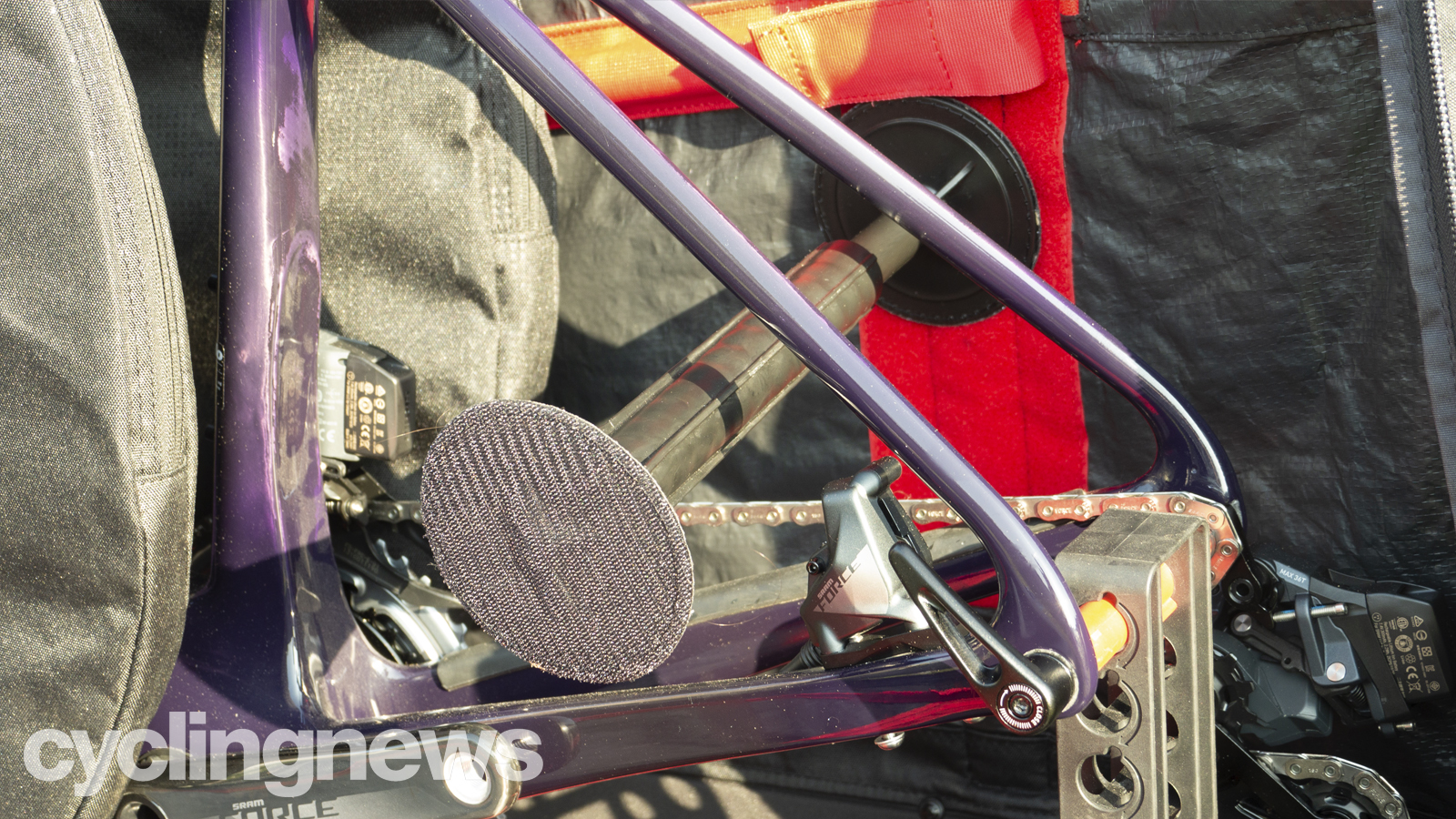
Once you've placed the frame (now with your bike's frameset secured into place) into the case, there's plenty of room either side for your wheels to slide in. Straps are available to hold everything in place, as is a cross brace that will protect your chainstays against lateral impacts.
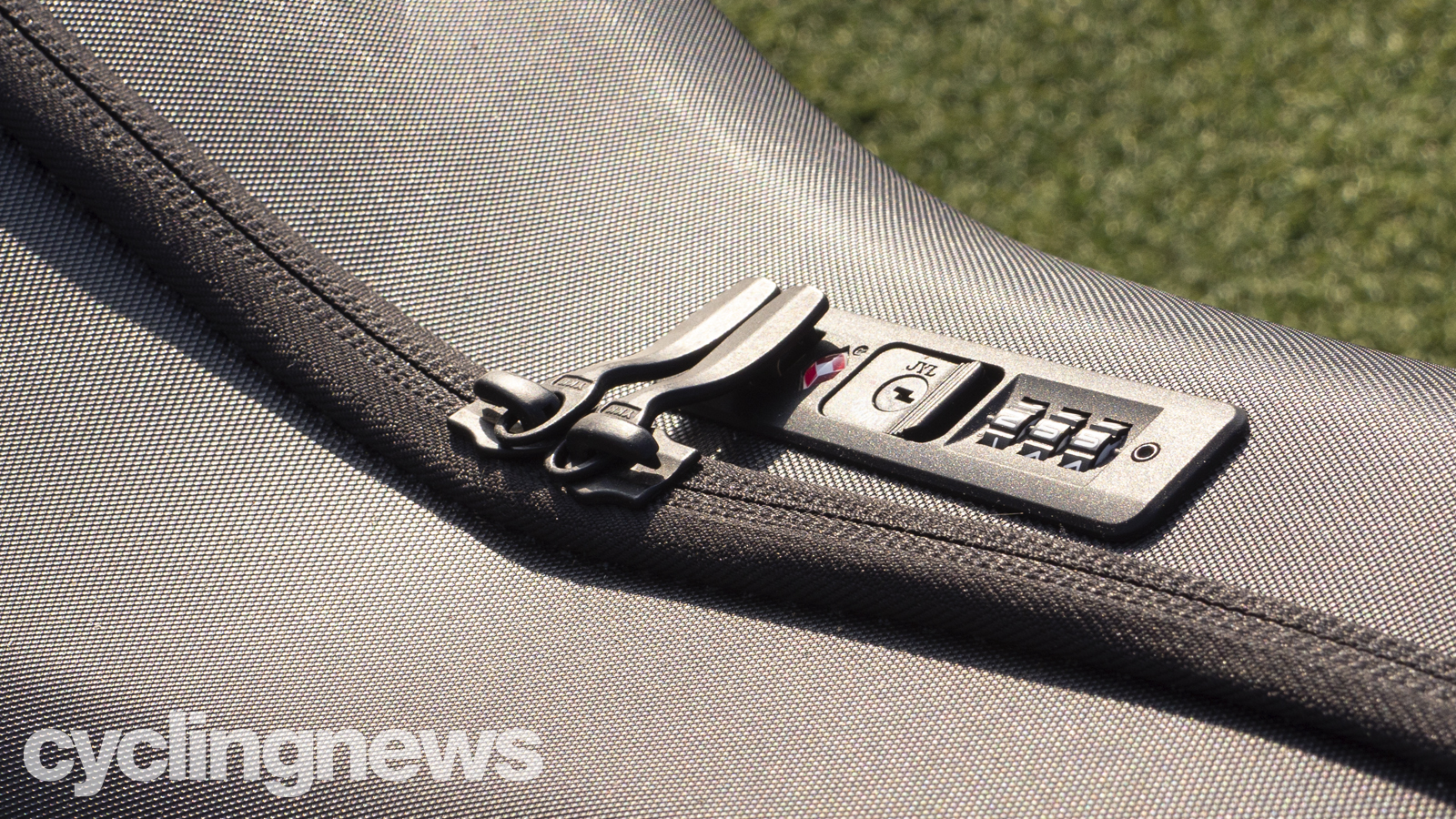
Once everything's in the bag and you've zipped it shut, the inbuilt combination code (like you'll find on many suitcases) will prevent opportunistic thieves from having a nosy inside. Of course, this is far from the security that the best bike locks are going to offer, but for added peace of mind, it's a helpful touch.
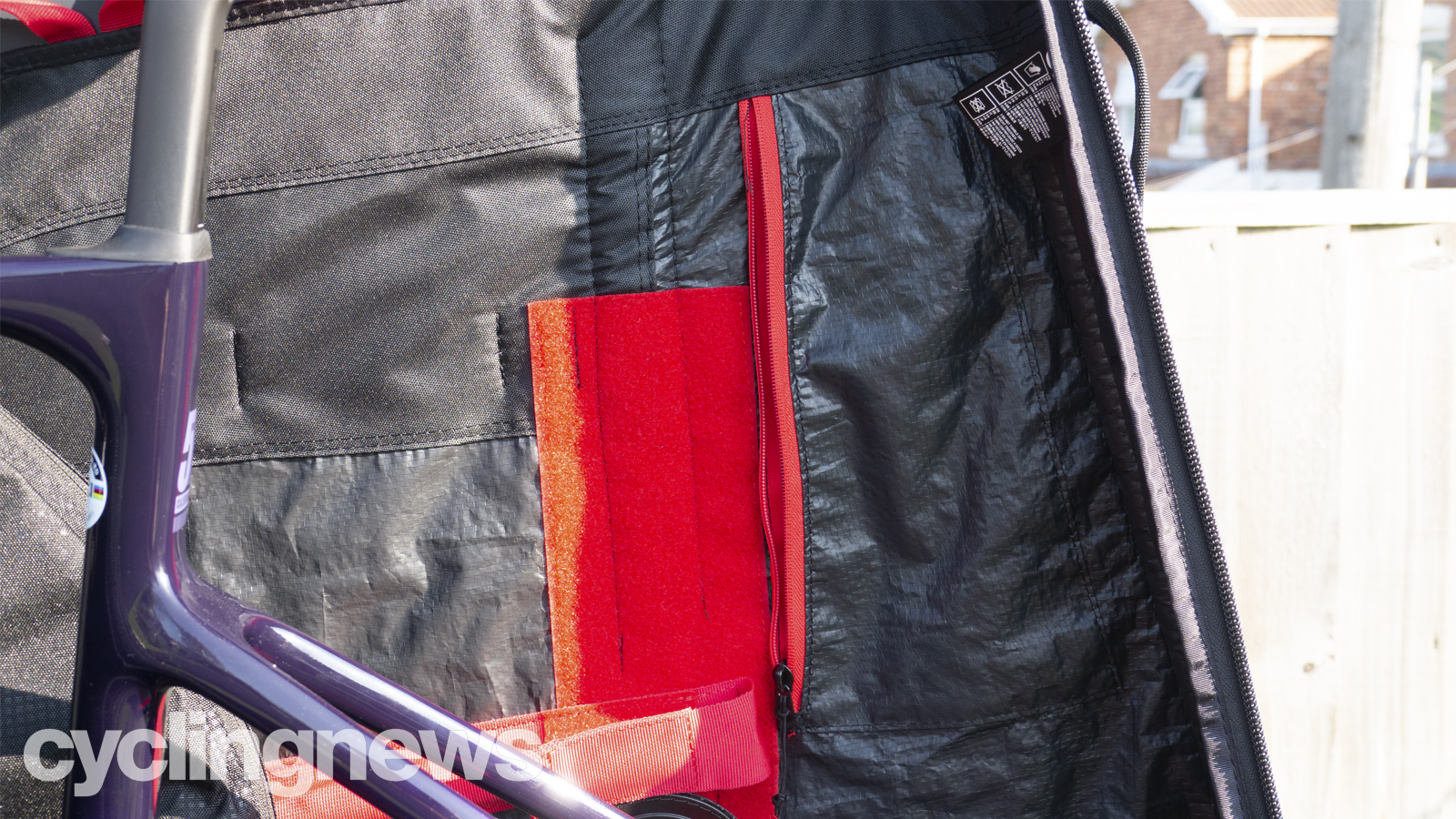
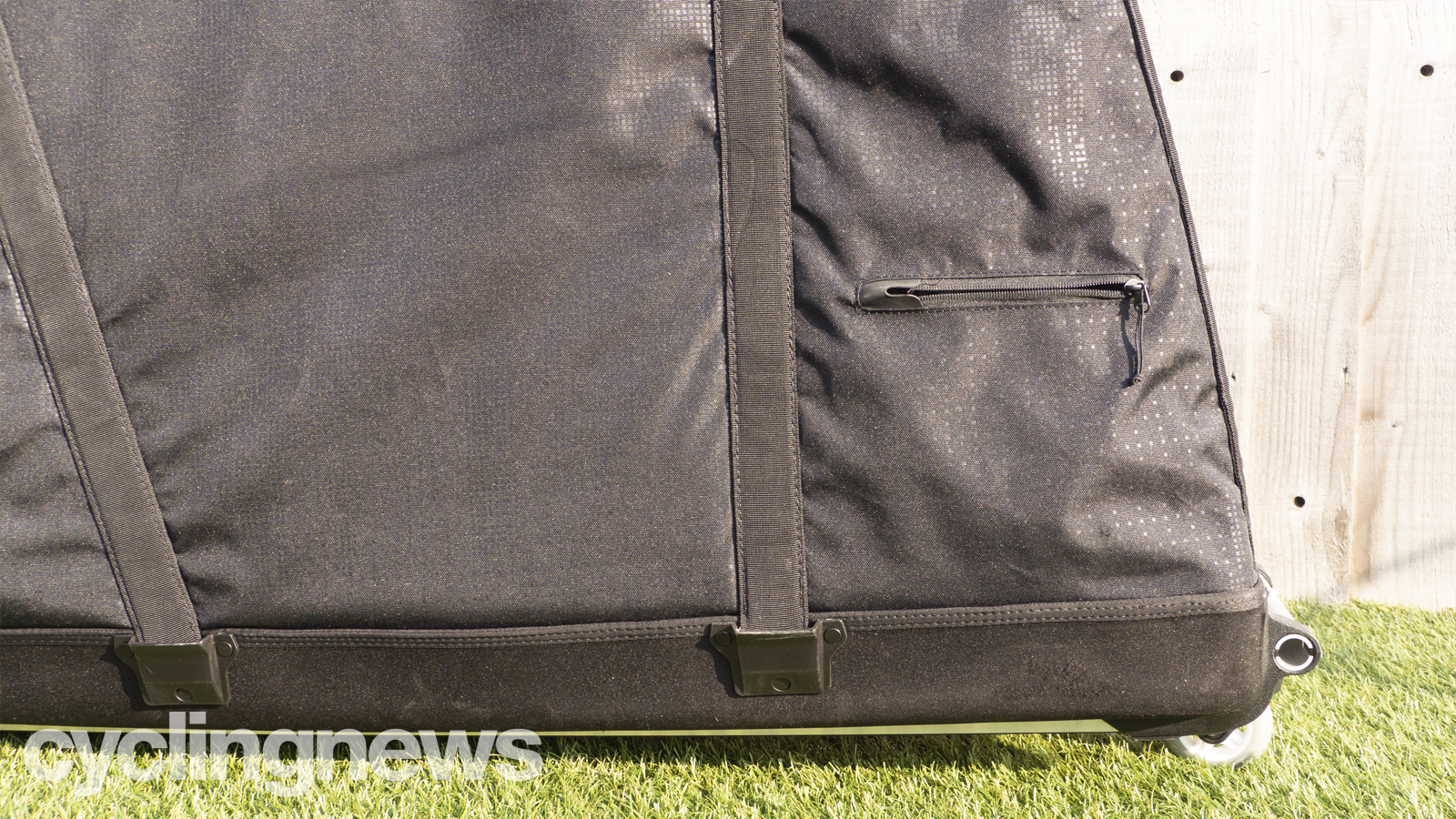
A helpful internal pocket is provided, too. Useful for keeping things such as tools or pedals, which are often too dirty for your suitcase but would damage your bike if they broke loose. An external pocket is offered too, as a place for the front wheel to be placed at arrival at check-in - although being honest, I forgot to do this, thankfully the wheel remained intact.
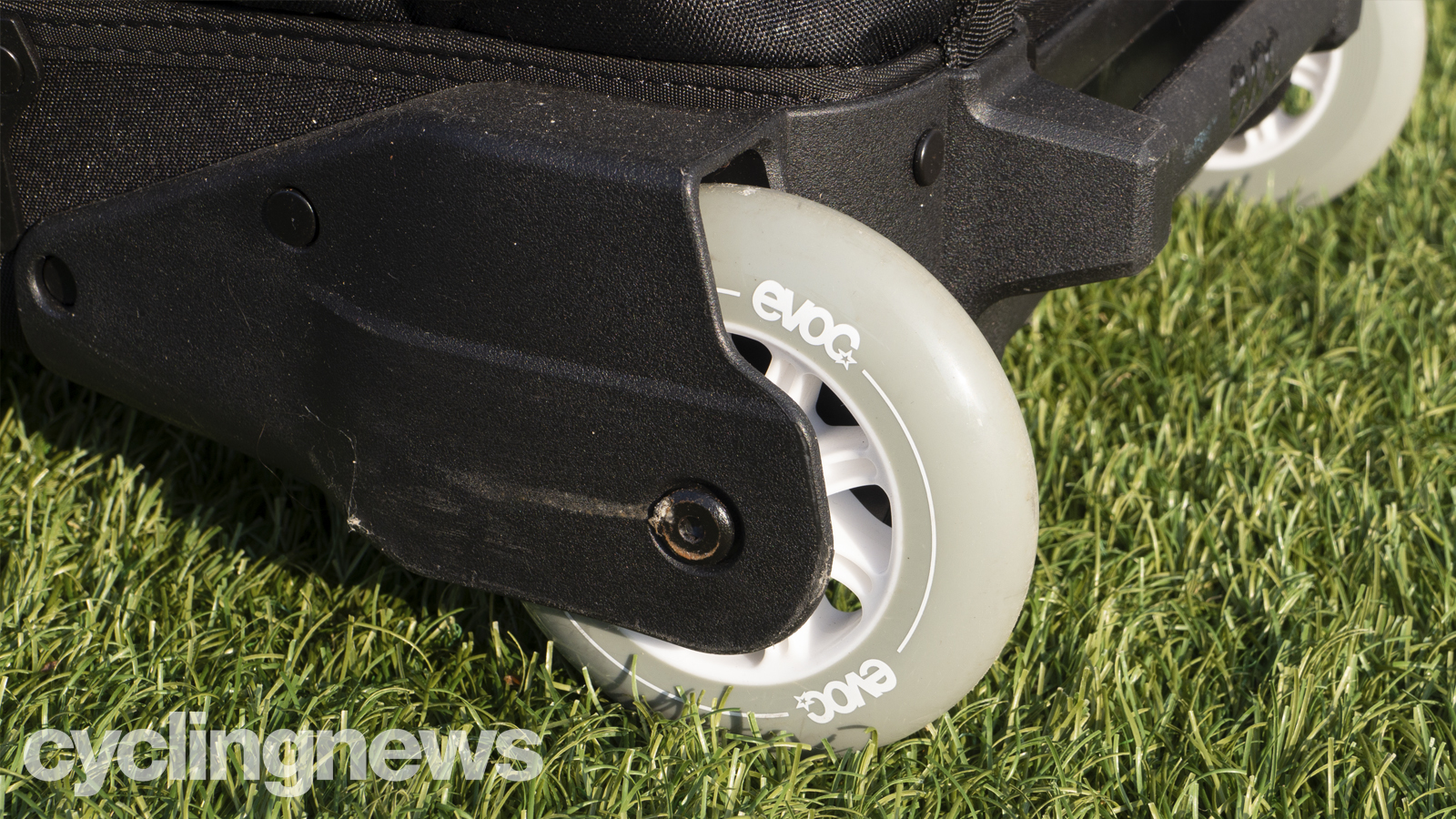
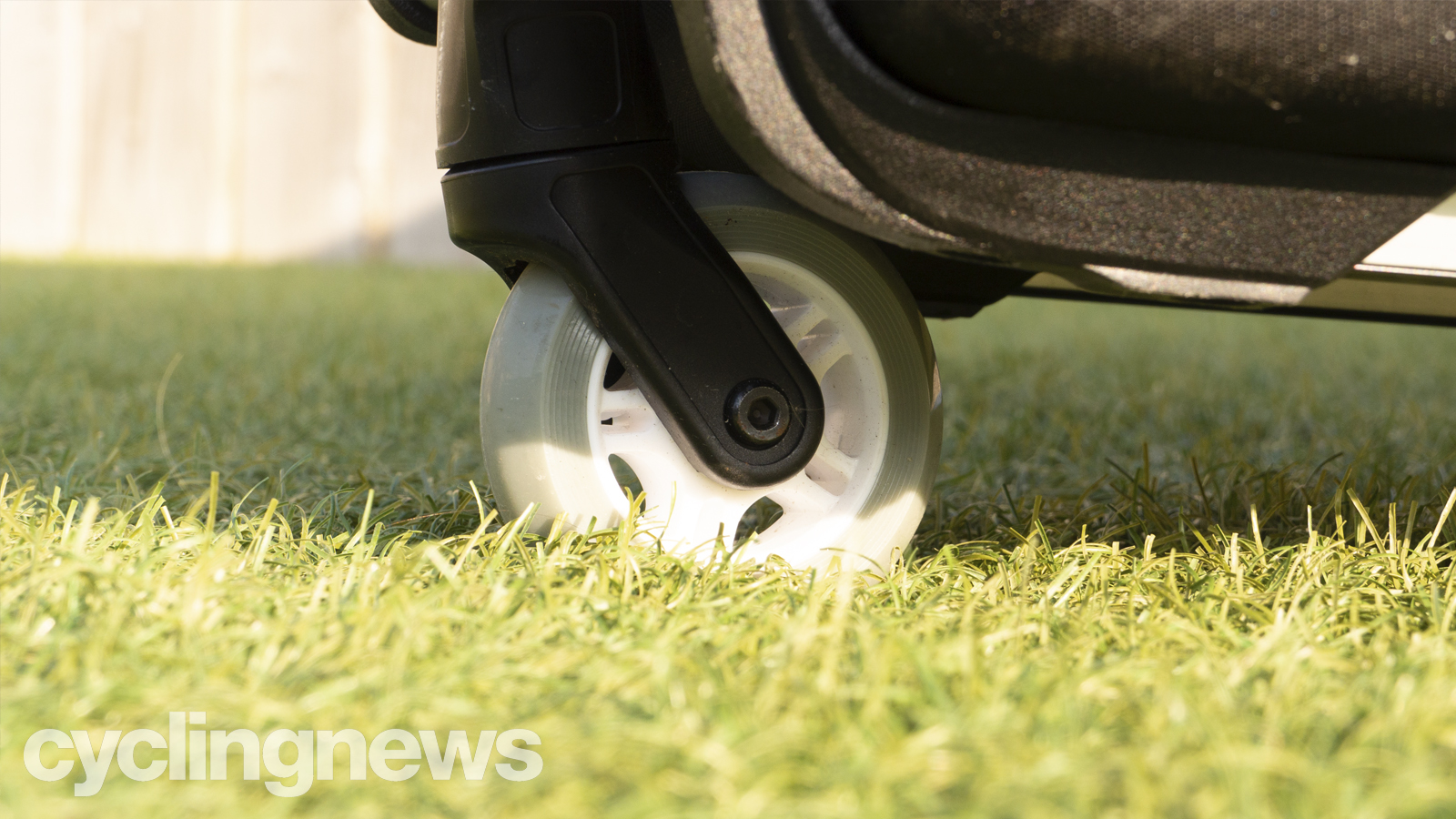
Three wheels adorn the base of the Road Bike Bag Pro, all of which are replaceable roller blade type wheels. The two at the rear are fixed in line, while the front central wheel is free to roam like a shopping trolley wheel. I think if I were being picky, I'd prefer wheels at the front too, as the central wheel has a habit of being unstable when pulled at the wrong angle.
Handles are scattered throughout the bag, which should provide the majority of owners plenty of options when it comes to manoeuvrability. The handle on the front of the bag above the rotating wheel is the obvious choice when it comes to pulling the bag along, however, at 6ft 2" (186cm tall), I did find it to be a little too low and found myself having to crouch ever so slightly in order to reach it. I think a handle atop the plastic cover at this end of the bag would resolve this.
Verdict
The coronavirus pandemic has unfortunately curtailed my travelling plans, so I only have a single two-hour flight from Bristol to Majorca with which to judge the performance of the bag from a safety and protection standpoint. Various small scuff and scrape marks on the outside of the bag show signs of minor maltreatment en route, but the bike travelled there and back unscathed. Even the rather common problem of hoods being turned inwards was non-existent thanks to the hardened plastic upper.
There are a couple of minor things that I would change should Evoc ever decide to create a version 2.0, but in comparison to the majority of the competition's offerings, the difference is truly night and day.
Of course, I'm not forgetting there is one player that competes more closely: the Scicon TSA 3.0 AeroComfort, which promises a similarly minimalistic approach to disassembly and comes with a slightly smaller overall footprint.
Comparing them both side by side, the Scicon is smaller and lighter overall, but foregoes the hard plastic protection. The Scicon bag uses four wheels, all of which can spin like a shopping trolley, so it has a tendency to drift, although it does make for slightly easier cornering through the serpentine queueing barriers you're likely to find at an airport. Despite the hard case of the Evoc, it's the Scicon that feels more top-heavy, by virtue of its smaller wheelbase. As for the all-important question of which is faster when it comes to rebuilding the bike upon arrival at your destination, a completely unscientific test of racing friends on holiday, it was the Scicon that won the day, albeit only by around 10 seconds, and both easily under the 10-minute mark. We had both already kitted up and ridden to the café by the time traditional bike box owners were finished.
Evoc Road Bike Bag Pro: Specs
- Maximum dimensions: L: 137cm, H: 90cm, W: 50cm
- Empty weight: 24.25lbs / 11kg
- Price: US$925 / AU$1,399 / €795 / £749.99

Josh is Associate Editor of Cyclingnews – leading our content on the best bikes, kit and the latest breaking tech stories from the pro peloton. He has been with us since the summer of 2019 and throughout that time he's covered everything from buyer's guides and deals to the latest tech news and reviews.
On the bike, Josh has been riding and racing for over 15 years. He started out racing cross country in his teens back when 26-inch wheels and triple chainsets were still mainstream, but he found favour in road racing in his early 20s, racing at a local and national level for Somerset-based Team Tor 2000. These days he rides indoors for convenience and fitness, and outdoors for fun on road, gravel, 'cross and cross-country bikes, the latter usually with his two dogs in tow.
